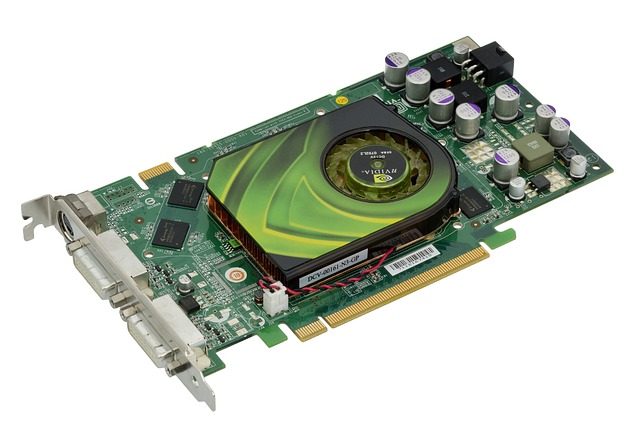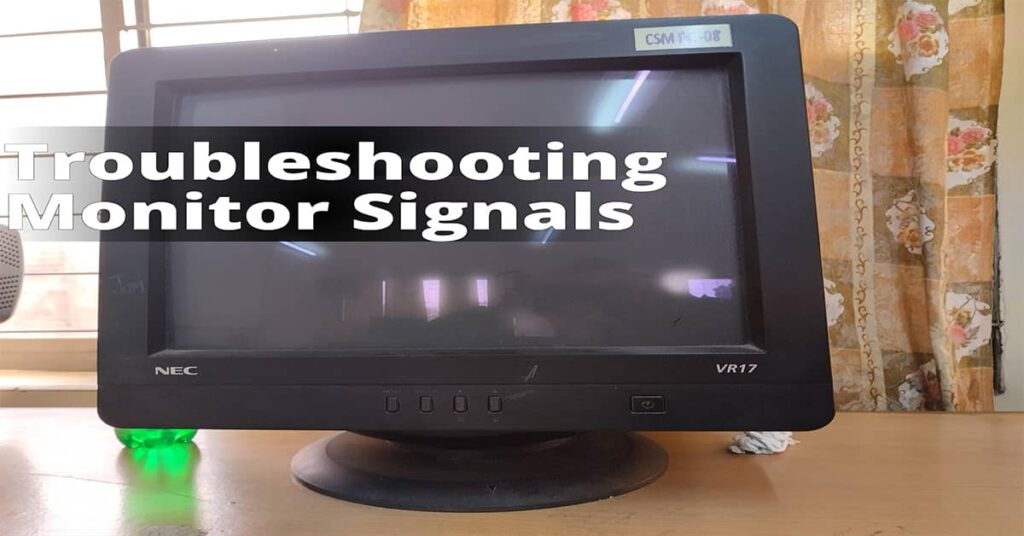Monitor Loses Signal but Computer Stays On – Fixed
Are you frustrated with a situation where your monitor loses signal while your computer remains on? In this article, we will explore the possible causes behind this issue and provide you with a comprehensive guide on how to fix it.
What to do when the monitor loses signal but the computer stays on?
- Check cable connections and power supply for any issues or loose connections.
- Adjust display settings and update graphics drivers to ensure correct configuration.
- Test with a different monitor to determine if the issue is with the monitor or the computer itself.
Why Does the Monitor Loses Signal but Computer Stays On?
When your monitor loses signal while your computer stays on, it means that there is a disconnect between the display and the computer itself. Simply put, the monitor is not receiving the necessary signals from the computer to display the content.
What Are the Common Reasons Behind This Issue?
There are several reasons why your monitor may lose signal while your computer remains on. Some common causes include:
- Loose or damaged video cable connections between the monitor and the computer.
- Power supply issues with the monitor.
- Incorrect display settings.
- Outdated or incompatible graphics drivers.
- Faulty monitor or graphics card hardware.
- Malware affecting the display settings.
- Operating system issues or outdated software.
Now that we have a better understanding of the problem, let’s move on to the potential solutions.
Check the Connections
Ensure Proper Cable Connections
The first step in troubleshooting this issue is to check the cable connections between your monitor and computer. Follow these steps:
- Securely plug in all cables connecting the monitor to the computer, including the video cable (usually VGA, DVI, HDMI, or DisplayPort).
- Inspect the video cable for any damage or loose connections. If you notice any frayed wires or bent pins, consider replacing the cable.
- If possible, try using a different video cable or output port on your computer to rule out any issues with the current setup.
Power Supply Verification
Sometimes, power supply problems can cause the monitor to lose signal. To verify the power supply:
- Check if the monitor is receiving power by looking for the power indicator light. If the light is off, make sure the power cord is securely connected to both the monitor and the power outlet.
- Try connecting the monitor to a different power outlet or using a different power cord (if available) to rule out any issues with the electrical connection.
Adjust Display Settings
Restart and Enter BIOS Settings
Restarting your computer and accessing the BIOS settings can help resolve display-related issues. Here’s how:
- Restart the computer and watch for the on-screen prompts to enter the BIOS settings. Typically, you can press Del, F2, or Esc during the startup process to access the BIOS.
- Once in the BIOS settings, locate the video or display settings option. Ensure that the settings are correctly configured for your monitor.
- If you recently made any changes to the display settings, such as adjusting the resolution or refresh rate, try reverting them back to the default values.
Update Graphics Drivers

Outdated or incompatible graphics drivers can often cause display problems. It is crucial to keep your graphics drivers up to date to ensure compatibility and optimal performance.
To update your graphics drivers, follow these steps:
- Visit the manufacturer’s website for your graphics card (such as NVIDIA, AMD, or Intel) and navigate to their driver download section.
- Locate the latest drivers for your specific graphics card model and operating system.
- Download the drivers and follow the installation instructions provided by the manufacturer.
- After installing the updated drivers, restart your computer and check if the issue persists.
Test with a Different Monitor
Connecting an alternative monitor to your computer can help determine whether the issue lies with the original monitor or the computer itself. Here’s what you can do:
- Connect an alternative monitor to your computer using the same video cable and port.
- Power on the alternative monitor and check if it displays the content correctly.
Interpreting the results:
- If the second monitor works properly, it indicates that the original monitor may be faulty and require repair or replacement.
- However, if the issue persists with the second monitor, it suggests that the problem lies with the computer itself, possibly with the graphics card or other internal components.
Check for Hardware Issues
If the issue persists after trying a different monitor, it may be necessary to inspect the graphics card for any physical damage or loose connections. Here are some steps to follow:
- Power off the computer and disconnect it from the power source.
- Open the computer case and locate the graphics card.
- Carefully remove the graphics card and inspect it for any visible damage, such as burnt components or loose connections.
- If you notice any issues, consider seeking professional assistance or replacing the graphics card if necessary.
In addition to the graphics card, other internal components like the motherboard and RAM can also contribute to display issues. Ensure that all components are properly seated and functioning correctly. If you are unsure, it is best to consult a professional for assistance.
If you have exhausted all the troubleshooting steps mentioned above and are still unable to resolve the issue, it is recommended to seek professional assistance. A qualified technician will have the expertise to diagnose and repair any hardware-related problems accurately.
| Possible Causes | Solutions |
|---|---|
| Loose or damaged video cable connections | – Securely plug in all cables connecting the monitor to the computer |
| – Inspect the video cable for any damage or loose connections | |
| – Try using a different video cable or output port on your computer | |
| Power supply issues with the monitor | – Check if the monitor is receiving power |
| – Try connecting the monitor to a different power outlet or using a different power cord | |
| Incorrect display settings | – Restart the computer and enter BIOS settings |
| – Update graphics drivers | |
| Outdated or incompatible graphics drivers | – Visit the manufacturer’s website for your graphics card and download the latest drivers |
| – Install the updated drivers and restart the computer | |
| Faulty monitor or graphics card hardware | – Connect an alternative monitor to your computer |
| – Inspect the graphics card for any physical damage or loose connections | |
| – Ensure all internal components are properly seated | |
| Malware affecting the display settings | – Run a thorough antivirus scan |
| – Remove any malware or viruses found | |
| Operating system issues or outdated software | – Check for operating system updates |
| – Install any available updates | |
| Other hardware issues | – Consult a professional for assistance |
Scan for Malware
Malware infections can sometimes interfere with display settings and cause issues like a monitor losing signal. Running a thorough antivirus scan can help identify and remove any malicious software from your system.
To run a thorough antivirus scan:
- Ensure that your antivirus software is up to date.
- Run a full system scan to detect and remove any malware or viruses.
- Follow the prompts provided by your antivirus software to quarantine or remove any threats found.
- After the scan is complete, restart your computer and check if the issue persists.
Check for Operating System Updates
Outdated operating systems can sometimes lead to compatibility issues and display problems. It is essential to keep your operating system up to date to ensure optimal performance and stability.
To check for operating system updates, follow these steps:
- On Windows, click on the Start menu, go to Settings, and select “Update & Security.” Click on “Check for updates” to see if any updates are available.
- On macOS, click on the Apple menu, go to “System Preferences,” and select “Software Update.” If updates are available, click on “Update Now” to install them.
- After installing any updates, restart your computer and check if the issue with the monitor losing signal has been resolved.
Reset Display Settings
If none of the previous solutions have resolved the issue, you can try resetting the display settings to their default values. Here’s how:
- Right-click on the desktop and select “Display settings” (on Windows) or “System Preferences” > “Displays” (on macOS).
- Look for the option to reset the display settings to their default values. This option may vary depending on your operating system.
- Confirm the reset and restart your computer to apply the changes.
In conclusion, encountering the issue of a monitor losing signal while the computer remains on can be frustrating. By following the troubleshooting steps mentioned above, you can identify and resolve the underlying causes of the problem. Regular maintenance, including keeping software and drivers up to date, is crucial for ensuring optimal performance and preventing such issues.
FAQ
What should I do if my monitor loses signal but my computer stays on?
Check the cables connecting your monitor and computer for any loose connections.
Who should I contact for help if my monitor loses signal?
Contact your computer manufacturer’s customer support for assistance.
How can I troubleshoot a monitor that loses signal?
Try connecting your monitor to a different computer to see if the issue persists.
What could be causing my monitor to lose signal?
It could be due to a faulty graphics card or outdated drivers on your computer.
How do I prevent my monitor from losing signal in the future?
Ensure that your computer’s power settings are not set to turn off the display automatically.
But what if the monitor still loses signal after trying all troubleshooting steps?
Consider contacting a professional technician to diagnose and repair the issue.


